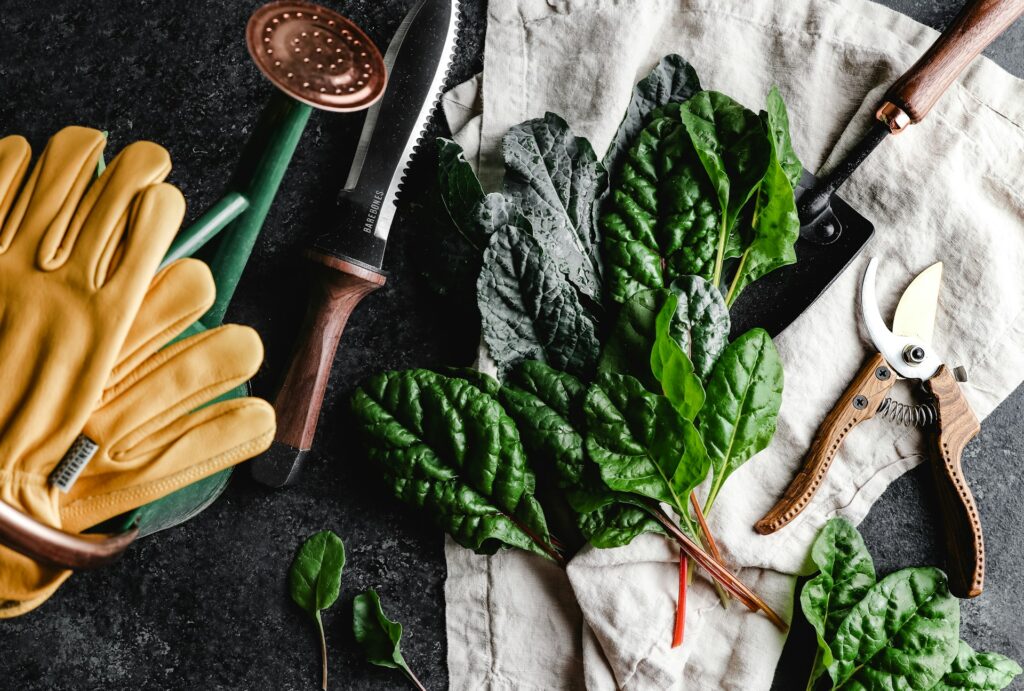Seattle homeowners know that few things are more frustrating than grabbing a garden tool in the middle of summer, only to find it rusted, dull, or broken. The city’s damp climate and consistent rainfall can quickly wear down even the best equipment when it isn’t looked after properly. That includes everything from small hand pruners to larger digging tools. If those tools aren’t clean, sharp, and stored the right way, they can start to underperform or even become unsafe to use.
Taking proper care of your landscape tools isn’t complicated, but it does need to be consistent. Simple upkeep can make the difference between replacing tools year after year or using the same set for many seasons. For its residents who enjoy keeping a tidy garden, Seattle presents a unique set of challenges. Moisture in the air leads to faster corrosion, and soil gets caked on easily when it’s wet. Staying ahead of those issues helps protect both your investment and your time.
Regular Cleaning And Inspection
Good maintenance starts with cleaning your tools after each use. Letting soil sit on metal blades or wooden handles traps moisture and invites rust. That kind of wear isn’t just cosmetic — it can shorten the life of your tools and make everyday yard tasks harder. In Seattle’s climate, those effects show up faster than you might expect.
To keep your tools cleaner and last longer, start building regular habits like:
– Rinse off soil and moisture using a garden hose or bucket
– Use a wire brush to scrub off hardened debris
– Dry tools completely using a towel before putting them away
– For tools with crevices or multiple joints, use a putty knife or old toothbrush
Beyond cleaning, every few weeks you should take two minutes to inspect each tool. Look for splintered handles, dull or bent blades, rust spots, or loose bolts. Keeping an eye out for these small issues can help you handle problems before they turn into big repairs.
If you notice rust forming on shovels or spades, scrub these areas with steel wool and apply a light coat of oil to help protect them from future exposure. Wooden handles also need attention — sand off splinters and apply linseed oil once or twice a year to help prevent splitting. With conditions often damp in Seattle, ignoring this step could cut the handle’s life span in half.
Sticking to a simple end-of-week routine to clean and check over your tools helps them stay ready and safe. It doesn’t take much time, and it saves you from dealing with degraded performance or replacements right when you need things working smoothly.
Proper Sharpening Techniques For Seattle Gardeners
Dull blades not only slow down your gardening work, but they can also make things more dangerous. When a tool isn’t doing its job correctly, it adds pressure to your wrists and arms. That goes for everything from hedge clippers to hoes. Sharpening your garden tools keeps everything working as it should and makes digging, cutting, or trimming more comfortable.
For Seattle homeowners, sharpening becomes even more important because the damp climate makes plants and soil heavier. For example, a clean cut on a wet shrub helps reduce plant damage compared to using a tool that tears rather than cuts.
Here’s a basic process to keep your tools sharp:
1. Clean your tool thoroughly before sharpening
2. Secure the tool in place using a bench vise or clamp
3. Use a mill file or sharpening stone to follow the natural angle of the blade
4. For curved blades, use a round file or whetstone
5. Apply even pressure in one direction, not back and forth
6. Rinse and wipe down the blade before applying a light coat of oil
Blades that should be sharpened regularly include pruners, loppers, spades, hoes, and shears. If you notice uneven edges or if a tool seems to require too much pressure to do its job, it’s time to sharpen it.
By staying on top of sharpening, Seattle homeowners can avoid damage to both their tools and plants. Having sharp garden tools on hand means tasks can be done faster and with less strain. Each tool will work the way it was designed to, which pays off in both results and reliability.
Lubrication and Rust Prevention Tips for Landscape Tools in Seattle
Seattle’s moisture-heavy climate can wear your garden tools down faster than expected. If metal parts aren’t given proper protection, rust and stiffness will start to show up regularly. This can cause otherwise strong tools like pruners, hedge clippers, and shears to lose their flexibility or even seize up completely. It’s frustrating to reach for something mid-task, only to find hinges stuck or blades corroded.
Lubrication is simple but adds a big boost to tool function. Any tool with a moving part — like spring-loaded cutters or adjustable loppers — needs a light coat of lubricant every few weeks, especially during wetter seasons. Silicone spray, three-in-one oil, or even a dab of machine oil works. Apply it to the joints, wiping away excess to avoid grime buildup. Avoid using vegetable oils or motor oil, which can turn sticky or attract pests.
Here’s how to make rust prevention easier:
1. Store your tools dry. Don’t leave them out after using them, even for a few minutes
2. Coat bare metal with a thin layer of oil after each cleaning or sharpening
3. Use a moisture-absorbing container or silica pouches in enclosed storage
4. Avoid leaving wooden-handled tools in direct contact with damp surfaces
5. Keep a rag and oil bottle in your tool storage area for quick, after-use care
Wooden tool handles also benefit from maintenance. Applying linseed oil can help keep the wood from cracking. Sand lightly before applying, and let it absorb overnight before use. These small habits help extend your tool’s working life without adding much to your routine.
Storage Ideas That Protect Landscape Tools in Seattle
Where you store your tools matters just as much as how you use them. Seattle’s winters and cooler summers mean moisture often lingers in sheds, garages, or outdoor corners. While it may be tempting to lean tools against a fence or pile them in a corner of the garage, that’s a quick way to shorten their life.
Indoor options are better for long-term performance. Wall hooks or pegboards make it easy to keep tools off the ground and allow for better air circulation. Even inside sheds, placing tools on racks or wall brackets helps them stay cleaner and avoid pooling moisture from the floor.
If outdoor storage is your only option, look for weather-resistant lockers or waterproof tool chests. Ensure they’re lifted off the ground and tucked under a covered area to reduce direct rain exposure. Tools should always be wiped dry before they go into storage.
Keep your tools organized to avoid unnecessary wear. Loose tools rubbing against each other can cause scratches or bending. Sorting them by type in containers or sections also helps you spot if something is missing or in disrepair.
Good storage habits keep your tools dryer, cleaner, and in better condition between uses. Incorporating just a few adjustments like wall-mounted holders or simple oiling cloths next to your workbench helps prevent damage before it starts.
Seasonal Maintenance Schedule for Garden Tools in Seattle
Seattle’s seasonal shifts come with different tool demands, and ignoring tool care through these cycles can lead to more frequent replacements. A basic seasonal routine helps you get ahead of performance issues and extend tool life.
Focus on the following seasonal checks:
Spring:
– Inspect and clean everything before first use
– Sharpen blades dulled over winter
– Check for rust or leftover moisture damage
– Apply fresh oil to hinges and joints
Summer:
– Wipe and store tools promptly after each use
– Keep blades sharp for cutting through denser summer growth
– Stay on top of rust prevention from added humidity
– Monitor tool handles for splinters from increased use
Fall:
– Deep clean and inspect for cracks or stress points
– Begin preparing tools for longer storage
– Sand and oil wood handles
– Tighten any bolts or fasteners that loosened over the season
Winter:
– Fully clean and oil all tools before storing
– Remove batteries from powered tools to avoid leakage
– Hang or elevate tools off cold, damp floors
– Store in dry, covered locations with airflow
Seattle’s damp fall and winter months are hard on unattended tools. Creating a seasonal habit can remove guesswork and help extend reliability through multiple growing seasons.
Keeping Your Landscape Tools in Top Shape
For Seattle homeowners, properly maintaining landscape tools saves money and time. Instead of dealing with corroded pruning shears or digging with a wobbly shovel, having clean, sharp, and rust-free equipment makes garden jobs easier. That’s especially important in a city where the weather can wear down equipment just from weekly use.
Every piece of equipment in the shed serves a purpose. Without regular upkeep, even a well-built pair of loppers or hedge trimmers can fail when needed most. By building small habits into your gardening routine — like weekly cleanups, oiling hinges, and seasonal check-ins — you’re setting yourself up with tools that stay reliable year after year.
Keeping your yard in top shape starts with maintaining the gear behind the work. Whether it’s preparing for summer growth or wrapping up fall cleanup, dependable tools make gardening safer and more efficient. With simple routines tailored to Seattle’s climate, your landscape tools will be ready for every season.
At Northwest Landscape Supply, we know that a consistent maintenance routine makes all the difference in keeping your garden running smoothly with dependable landscape tools in Seattle. For a quick estimate or to book a service visit, please contact us today.

